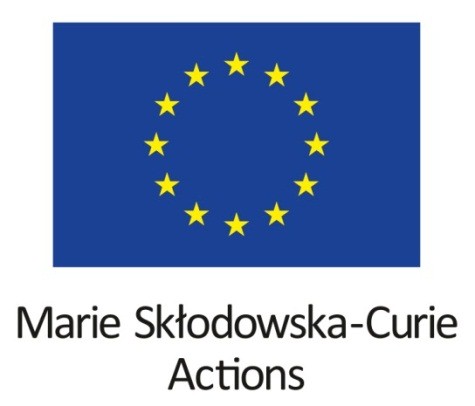
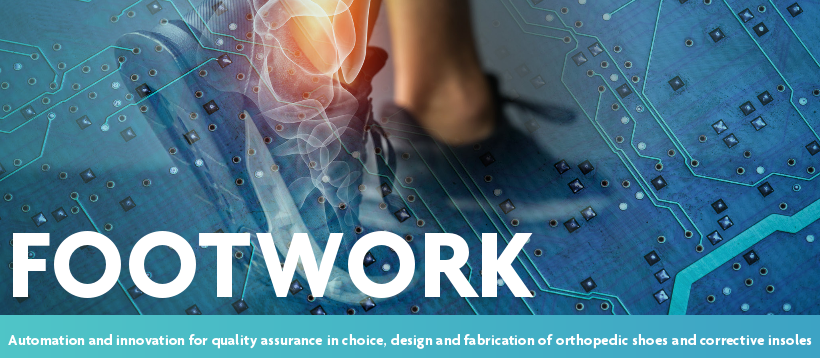
(December 15, 2017) - The idea for the CAD WALK project did not appear out of nowhere. Instead, it was the result of previous research: The imec FootWork project. The goal of the FootWork project was to develop an automated pipeline for the creation of custom foot orthoses, such as custom insoles and orthopaedic shoes. On December 4th, the FootWork project officially concluded with a closing event at Runner's Service Lab in Zwijndrecht, Belgium.
The challenge of automating a production pipeline for foot orthoses was a large one and required division into four main tasks: patient measurement; computer-aided design; 3D printing of orthoses; and the combining of all this into a single workflow application. These tasks were then respectively divided among the project's partners: The PSI lab at KU Leuven, The imec-Vision lab at The University of Antwerp, RS Print, and RS Scan.
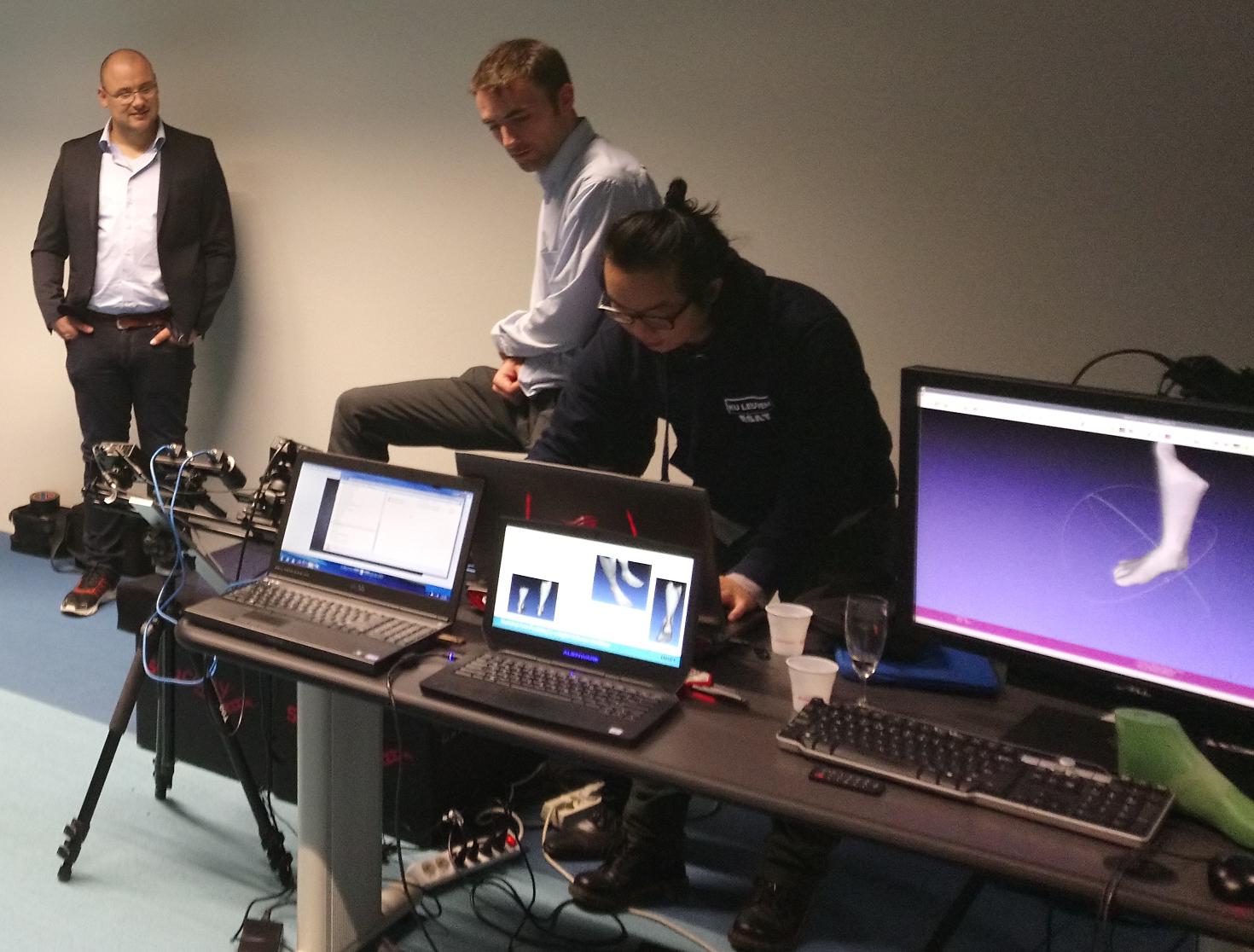
Patient Measurement: the first part of the orthosis creation pipeline is the measurement of the patient. In FootWork, the goal was to improve this step by introducing a low-cost 3D foot scanning system. The scanner had various requirements: it had to be cheap, it had to be easy to setup, and it had to create an accurate 3D scan of the patient's foot. To tackle this task, researchers at the PSI Lab created what is called a stereo, structured light, system. The idea is to use a projector to shine a pattern on the foot. This light pattern is then read using a camera. If the position of the projector and the position of the camera are known, then the 3D shape of the foot can be computed from how the light pattern is deformed. The whole foot can then be scanned using a combination of the projector-camera pairs.
Some benefits of a system like this are that the cameras and projectors required are relatively cheap (in fact, the Xbox Kinect is basically this, but with infrared light). Also, and more importantly, a system like this can scan the foot in a single shot: all information needed for the 3D scan can be collected at the same moment in time. This allows the scanner to eliminate any error that is due to patient motion. It also gives the developed system the potential to generate multiple 3D foot scans across time, allowing for the study of foot loading and motion.
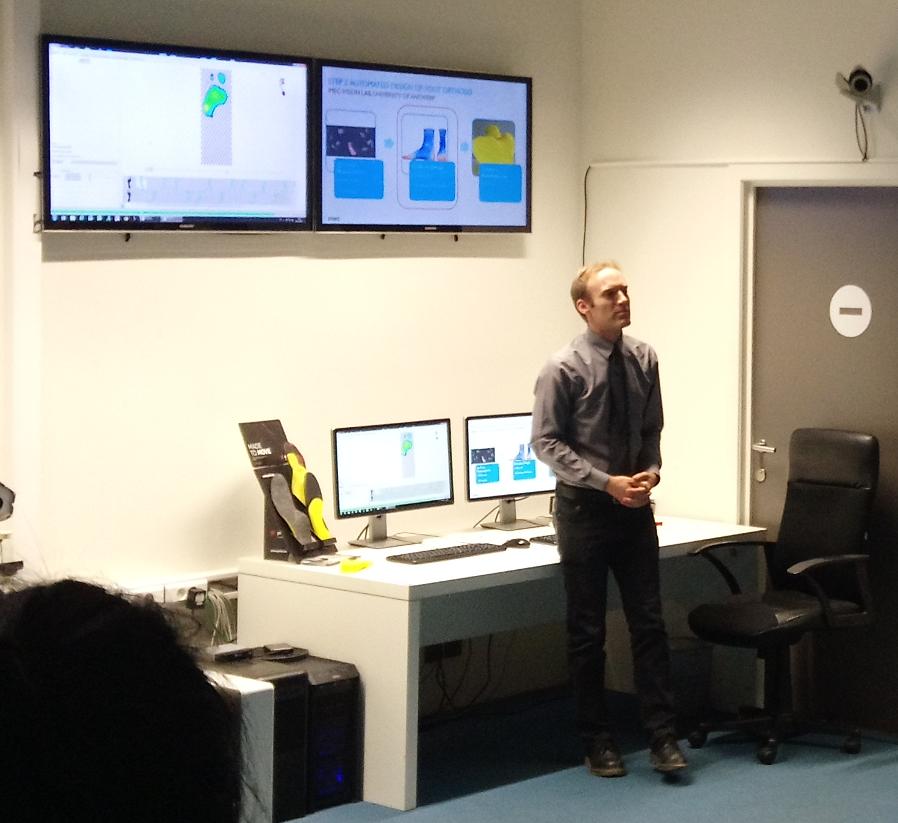
Computer-Aided Design: the second part of the pipeline required the creation of computer algorithms to automatically design the patient's foot orthosis. The algorithms would take in the 3D foot scan collected using the 3D foot scanner designed by the PSI Lab, as well as a foot pressure measurement like those used in the CAD WALK project. The output of the algorithms would then be a ready-to-print, computerized, 3D model of the orthosis.
Artificial intelligence played a key role in this design step. Using a collection of patient's whose foot measurements and orthoses designs were collected during the project, artificial intelligence algorithms were used to identify how the foot measurements relate to the orthosis designs. Once these algorithms have found out how to match the foot to the orthosis, we can then provide only the foot measurements and have it estimate what the orthosis should look like.
The biggest challenge in this part of the pipeline was the sheer amount of data that the artificial intelligence algorithms had to sift through. Each patient's 3D foot scan contains ~80,000 numbers and their foot pressure video can contain over 100,000 numbers. The computer then has to filter through all of those numbers to find the few that really matter for the orthosis design. Unfortunately, computers are not that smart, so we relied on experts to create rules on what unnecessary data to filter out.
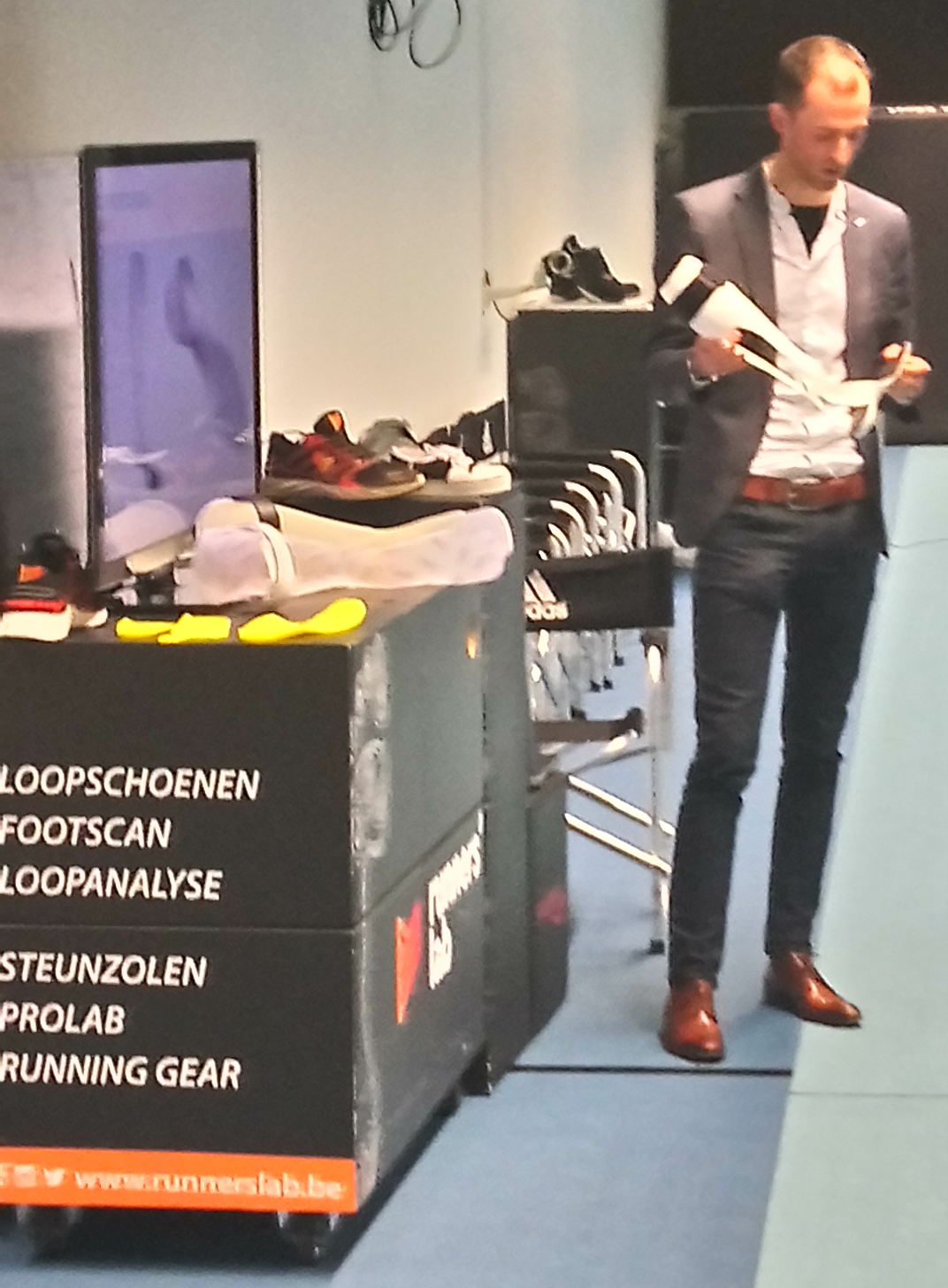
3D Orthosis Printing: once a ready-to-print 3D model of the foot orthosis has been designed, it has to be 3D printed. This might seem like a straightforward step, but it is not. For orthoses like an insole or an ankle-foot orthotic (like the shown in the image on the right), they have to withstand force from, and correct the position of, the patient's foot as they walk. For orthopaedic shoes, the 3D-printed shoe lasts also have to withstand the strain and stress placed on it during the shoe building process. These requirement means that the orthoses has to have very specific material properties. Those properties are determined by how the orthosis is printed and what material is used in that printing process.
During this project, researchers at RS Print focused on testing various materials in order to determine how they handle the stress and strain from walking, running, and shoe building. They also examined the order in which each part of each orthosis should be 3D printed in order to infuse it with the correct mechanical properties. Finally, researchers at RS Print also looked into how to 3D print these devices in a cost-effective way. They found that, in some places, materiel could be removed and still result in a quality orthosis that can withstand the expected stress and strain. One example is shown in the image on the right, where a portion of an ankle-foot orthosis is removed along the back of the lower leg and around the Achilles tendon.
In the end, researchers at RS Print were able to develop 3D printing strategies for the printing of custom insoles, shoe lasts, and ankle-foot orthotics.
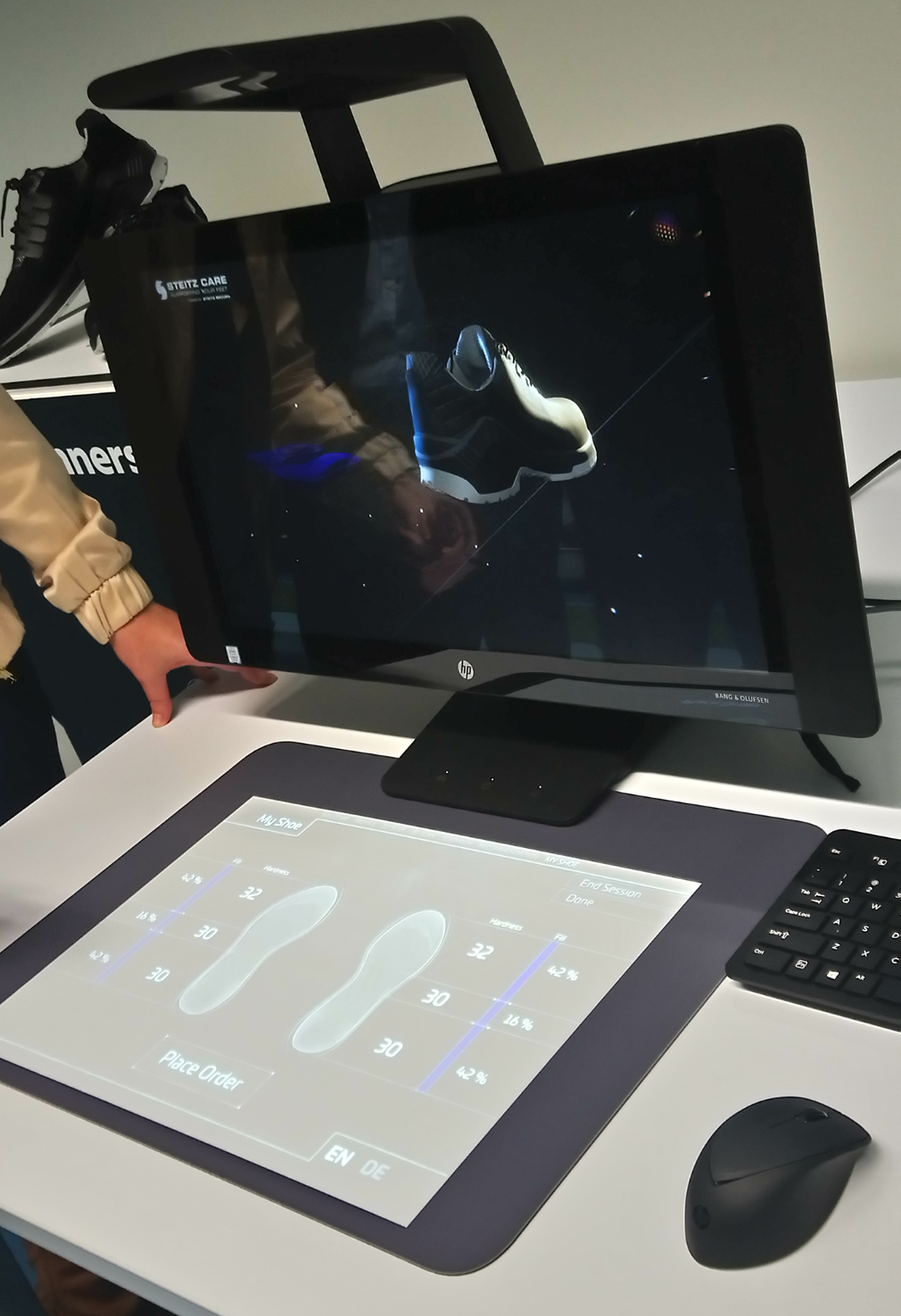
Unified FootWork App: the last task of the FootWork project involved combining all of the above advancements into a single application. It is expected that the result of this unified setup will be a reduction in the amount of time a patient has to wait before receiving their orthosis. A secondary goal of this task is to place the application of the cloud so that it can be accessible online and usable without the need for a large amount of computer equipment.
To the left, you see a prototype of this application. On the top touchscreen, the user can review the current orthosis design (in this case a custom-designed shoe). On the bottom touchscreen, the user can edit the orthosis design by hand if need be. This system would also be connected to a 3D printer, 3D scanner, and a pressure plate, in order to collect a user's foot measurements as well as manufacture the orthoses.
Link to CAD WALK: the CAD WALK project was born out of the computer-aided design task of the FootWork project. As mentioned, one of the biggest challenges in that task was to reduce the amount of data that the computer had to filter through. Ultimately, we wanted to keep information necessary for the orthosis design and discard everything else. This led to the question: what information is necessary for an orthosis design? Our answer: let's keep the parts of the foot measurement that show something abnormal.
It was from this idea that the goal of the CAD WALK project became the identification of abnormality in a patient's foot measurement, specifically a foot pressure measurement. To tackle this problem, we intend to compare a patient's foot pressure measurement to an estimate of what their foot pressure measurement would look like if they were healthy. Coming up with that estimate, and making sure it is accurate, is the challenge that we face.
